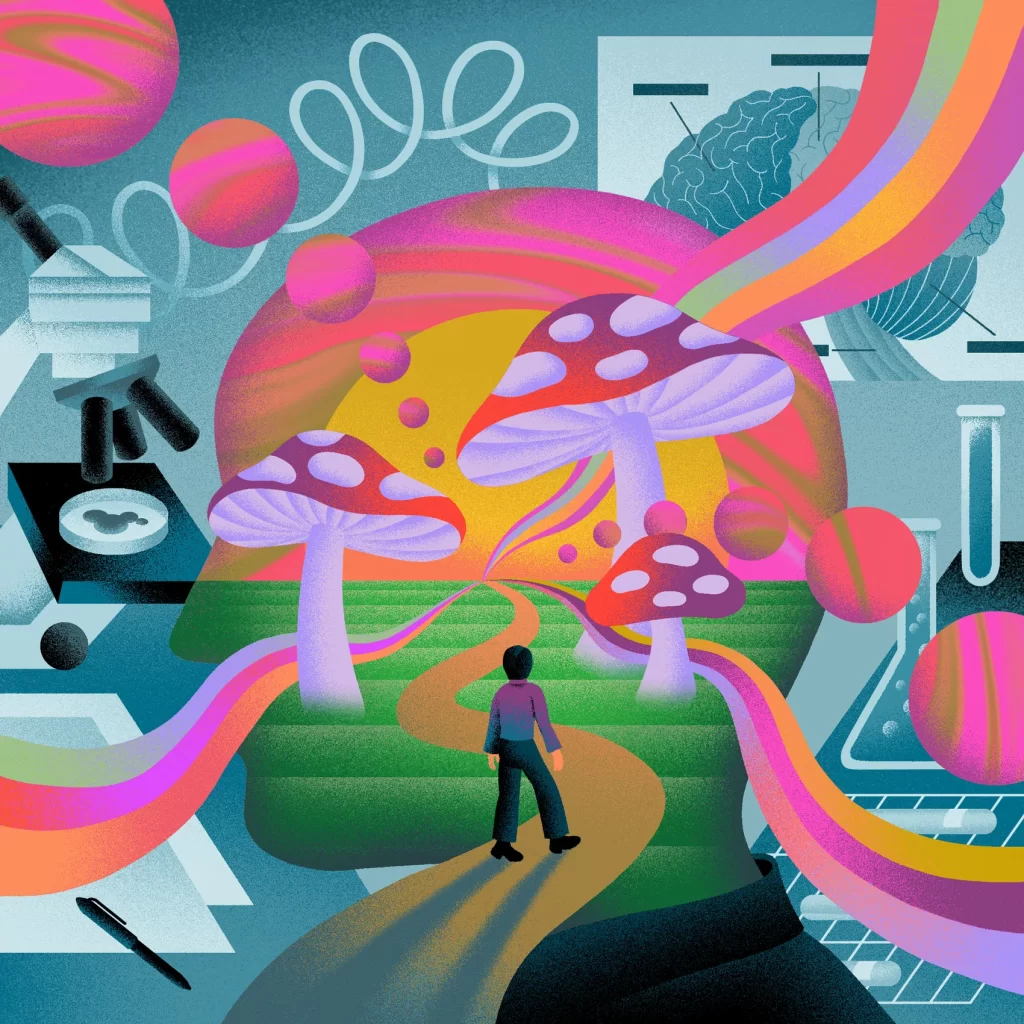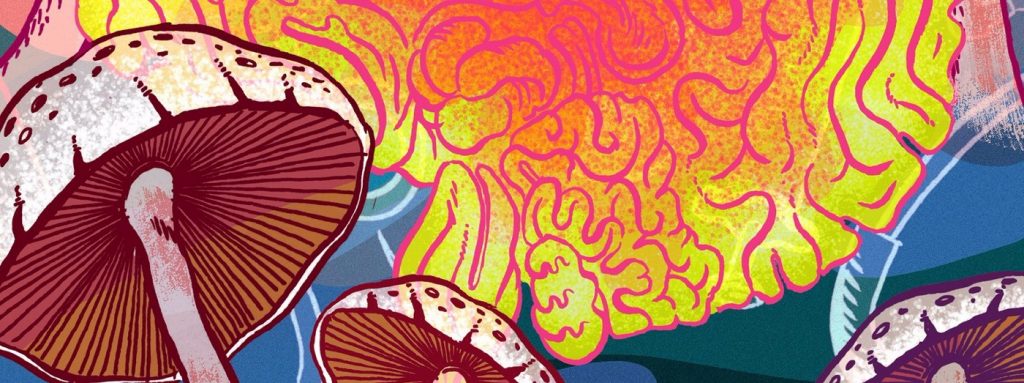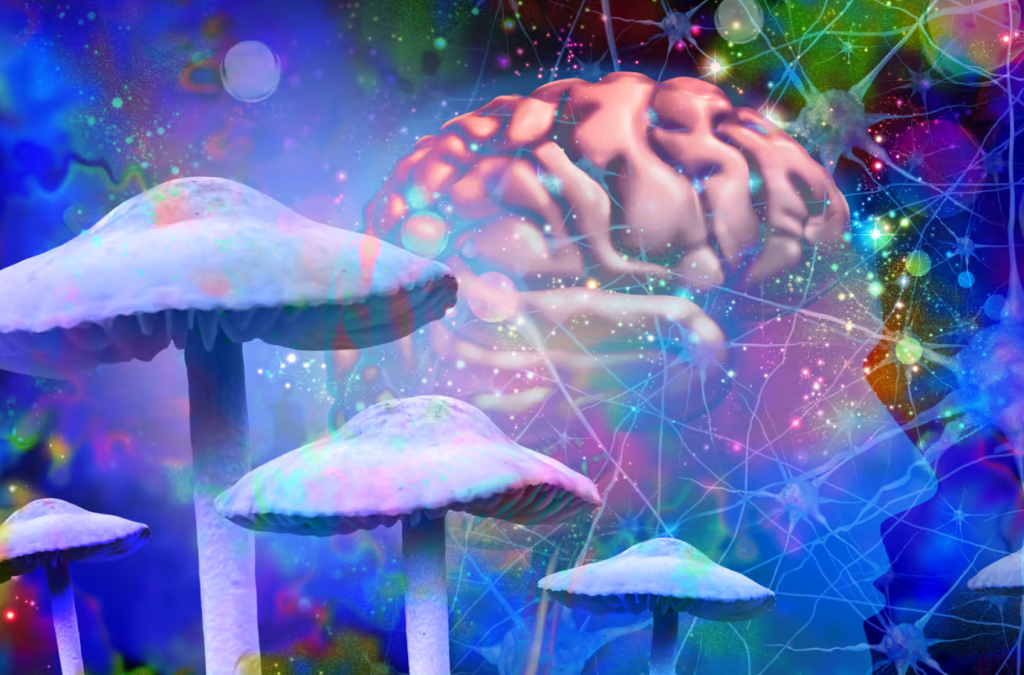
As chemical species, DMT and psilocybin are actually fairly similar. Both molecules belong to a class of compounds called tryptamines. The tryptamine class includes natural neurotransmitters like serotonin, as well as many psychedelic substances found in plants and fungi. Yet, there’s one important way that the two compounds differ: Their metabolism.
It isn’t actually psilocybin that produces psychoactive effects in the brain. Instead, the fungal compound is converted into the more active chemical species psilocin by the human liver. It’s psilocin that travels through the bloodstream and makes it into the brain. Both DMT and psilocin share a similar molecular structure—if you’re wondering exactly how similar, psilocin is also known as “4-hydroxy DMT” to chemists. Of course, little differences have a big impact in the world of chemistry.
The DMT vs. Mushrooms Trip
DMT and psilocin both interact with the brain’s serotonin receptors. You probably know serotonin as the neurotransmitter that lifts and stabilizes mood.
A trip on either DMT or mushrooms is liable to be a profound, introspective journey tinged with visual hallucinations. But, beyond this, the DMT and mushroom experiences are quite different. Your trip will deviate in intensity and duration based on which of these entheogens you choose to take. What you’re looking to get out of your trip will help inform whether you should take DMT or mushrooms. Looking for an all-day experience? Then you might be keen on shrooms. Low on time, but seeking a profound experience? Then DMT might be the ticket.

Duration
The length of your trip is substantially different if you’re taking mushrooms or consuming DMT.
Going on a mushroom trip is something of an all-day affair. After consumption, the mushrooms can take up to an hour to kick in, and from there you can expect a trip that lasts an average of four to six hours. While the amount of mushrooms you choose to take won’t impact the length of your trip, how you choose to take them will. Consumption methods like Lemon Tekking often give you a shorter, more intense mushroom trip.
On the other hand, tripping on DMT is a much shorter event. When inhaled, DMT comes on in a matter of minutes and the whole trip lasts only about half an hour. Consuming DMT via changa will cut your trip down to about fifteen minutes, but creates a longer state of euphoria once you come down.
Drinking ayahuasca is another beast entirely. Traditional ayahuasca ceremonies can last several days, and the trip itself can be an intense four to six hours. However, actually accessing one of these ceremonies is tricky and expensive. As such, most people who do not have access to ceremonies partake in inhaled DMT.
Trip

A DMT trip is short and quite often profound. There’s a reason why one of DMT’s nicknames is “The Spirit Molecule.” Psychonauts regularly report experiencing a sense of oneness with the world around them, sightings of mystical entities, and in some cases ego death.
These profound experiences are typically accompanied by audio-visual hallucinations. Under the right circumstances, you may journey to what DMT trippers refer to as other “realms.” These realms are spaces outside of normal human existence where you will communicate with DMT entities and are likely to have the most potent DMT experience.
Mushroom trips, while typically much longer than DMT trips, don’t tend to come with the same kind of intensity. Although this isn’t something to take lightly—most consumers still find the mushroom experience to be profound, intense, and sometimes otherworldly. A mushroom trip can still prompt deep reflection and forced interrogation of emotions and experiences, especially when larger amounts of mushrooms are consumed.
These emotional trips are less common on lower doses, where you are more likely to experience moderate perspective shifts. Sometimes referred to as “museum doses,” low-dose mushroom trips offer a slight shift in perspective and often an elevated mood.
Full hallucinations—which are indistinguishable from reality—are rare with mushrooms, although possible with very high doses. More often than not, however, you are liable to see the world around you breathe, sway, dance, and shift in sometimes ridiculous ways. Auditory hallucinations aren’t common either, though listening to a favorite record on mushrooms can yield a whole new experience and interpretation of the music.




